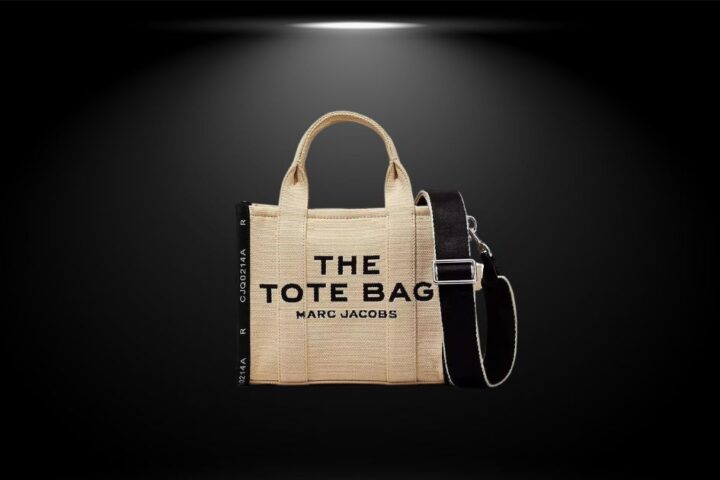When you acquire a premium brand item, you usually go through a lengthy process before purchasing it and making it your own. The journey entails transporting your favourite bag or shoe from one country to another. Import refers to the straightforward process of trading worldwide brand items from one location to another. The fashion sector is equally involved in export when it comes to shipping something from your own country, whether it is a raw material or finished Indian luxury products. Many transactions, known as cross-border transactions, occur in the midst of this. The most common form of this we see in our daily lives is cross-border e-commerce, in which we use digital technology to buy and sell clothing and other accessories online, engaging in international trade. The fashion industry is a global enterprise that is the most powerful and famous. According to eShopWorld’s (ESW) Global Voices 2021: Cross-Border Shopper Insights survey of more than 22,000 customers across eleven countries, one in every four (25%) shoppers surveyed purchased apparel from websites outside their own country in 2020.
Cross-border transactions are transactions in international trade involving two or more entities outside a country’s geographical limits or transactions in domestic work involving at least one party outside the transaction’s country. Transactions between individuals, businesses, or financial institutions wishing to transfer funds across borders can occur. Consumers and retailers are typically involved in this process, as are two brands as corporations between two nations, which might entail mergers and amalgamations of two companies, a simple international transaction, or a foreign company’s independent contractor.
Modern fashion houses transcend national boundaries. For example, an outfit with an Italian fashion label could have been designed in Milan by a team of British, French, and American designers and manufactured by contractors from China, Korea, and Mexico. This undoubtedly includes cross-border payments if the payee and transaction recipient are located in different countries. International merchants must be able to accept payments in all of the countries that they are targeting.
Working of Cross Border Payments
The e-commerce industry of today has a global reach. Payments, remittances, and purchases frequently necessitate exchanging money across borders. When a business accepts foreign payments, several scenarios must be considered because each country has its restrictions. When a customer makes a transaction, a system transfers funds from the buyer’s account to the merchant’s account. International transactions entail currency conversion, international transaction fees, and dealing with an exchange rate. A banking system directs the flow of money through these channels. Each bank has a counterpart in another city in the world’s major cities. To prepare for remittance, cash will leave the buyer’s bank and go to that bank’s partner in the merchant’s nation. The remitted funds will then be received by the merchant’s bank and deposited into the merchant’s account. These banks frequently collaborate with others to move funds, requiring more than four banking locations to interact while negotiating currencies, differing taxes, and transaction fees. Each cross-border payment is subject to a fee because there are several fees associated with cross-border transactions. Most of them are absorbed by bank fees. This fee is a percentage of the purchase price made by a consumer using a foreign credit card; this is because this rate varies amongst credit cards, so it’s difficult to predict what percentage will be charged in a purchase.
Furthermore, taxes apply to everything, which includes more than just sales tax. Shipments are subject to Value Added Tax (VAT) and customs duty rates. All of these differ from country to country because each has its currency value, so exchange rates are computed.
Customers want to pay conveniently; thus, numerous options for engaging in cross-border e-commerce are available, including the following.
Bank transfers – International transfers have long been used to make cross-border payments. Most larger banks will keep a limited selection of currencies on hand, but only a few can be accommodated at any time. When a customer in the UK wants to send money to a country where they don’t have the currency on hand, they must rely on their foreign banking partners to facilitate the transaction.
Credit Card payments – Credit cards play a prominent role in cross-border payments and are a go-to option for many consumers. Cross-border payments require more work from the involved credit card networks and acquiring banks as they need to convert between two different currencies. This additional workload results in increased fees that are passed down the payment chain
eWallet – An eWallet, often known as a digital wallet, is a payment method that allows users to make online or in-store purchases. eWallets, which are commonly available through apps for smart devices, allow users to securely store their preferred payment cards to pay for goods and services. Some eWallets enable users to transact in different currencies and place orders across borders. Wallet-to-wallet transactions do not technically classify as cross-border payments, although they aid in transaction facilitation. The process is not considered a cross-border payment until the monies are removed from the eWallet and transferred to the merchant’s bank account.
Business to Business Cross Border Payments
The fashion industry is a significant player in worldwide internet retail. According to projections, the fashion industry would generate €772 billion in online retail sales in 2023. Internationally, the market has a strong sales potential. However, not all fashion brands have embraced cross-border e-commerce. Despite its enormous potential, local fashion enterprises are wary of cross-border e-commerce, especially since expanding can improve sales and attract new customers to the brand. Local businesses can not only win customers from all over the world with the proper strategy, but they can also provide them with the proper shipping. Travel disruptions and restrictions imposed by pandemics have prompted many businesses to look for ways to recreate business-critical events in a digital context. The fashion industry, like many others, is unlikely to abandon in-person transactions entirely once the pandemic has passed, but this does not mean that digital payments will fall into obscurity. Therefore, fashion and high-end luxury brands must use it in physical and digital forms. The pandemic has made providing smooth cross-border experiences even more critical for cross-border B2B enterprises, emphasising the need for digital technologies. Failure to employ such tools at any level, for example, in the fashion business, will almost certainly result in significant financial ramifications for brands or shops. This is especially true for cross-border luxury fashion, which has traditionally been a face-to-face company reliant on foreign travel.
However, each of these will have its own set of obstacles, and they are as follows :
Customers suffer hidden costs – While taxes may only affect consumers in specific corridors, practically all cross-border e-commerce purchases run the possibility of various forms of hidden expenses. Depending on how the customer pays – whether by choice or as a result of the merchant’s alternatives – they may confront variable FX margins, ultimately raising their final purchase price. Intermediaries between the issuing and acquiring banks also take a cut.
Transaction costs between home currency and foreign currency – Customers are more likely to abandon their cart if they cannot make a transaction in their local currency. Still, by handling the currency conversion themselves, merchants can potentially capture more of the fees rather than passing them on to a card issuer.
Consumer expectations and cultural concerns – make garment fulfilment difficult. Some regions, for example, are more affluent and style- and image-conscious. Buyers in these markets will likely anticipate white-glove treatment for luxury items, including quality packaging and communication. Consumers value clothing quite differently in emerging economies where there is less prosperity. To be successful, you must first thoroughly understand your market.
International Regulations
Legislation and rules governing foreign transactions vary from country to country due to differences in geopolitics. However, several factors are universal and are considered by practically every country. Consider the following crucial elements in the Fashion Industry:
Entering the market – entails determining which country’s law will apply throughout the transaction and complying with the local legations where the goods or service is ultimately destined.
Safety Regulations – ensuring that it meets all of the safety standards established by the appropriate authority. These include screening raw materials utilised in the finished product before use.
No infringement of intellectual property – knowing that no violation will occur after such cross-border trade and transaction is completed concerning a product or service that could jeopardise anything already registered as a design, patent, trademark, or copyright.
Data Privacy – International data flows have revolutionised modern goods and services trade. Data flows provide new avenues for commerce and investment while allowing businesses to run more efficiently.
Conflicts between legislation can occur due to varying goals in consumer protection, law enforcement access, and national security exemptions. To guarantee that trade and transactions are not hampered needlessly, countries must design interoperable systems that allow commodities to move quickly while offering adequate protection.
In India, two Acts are principally concerned with when a person engages in cross-border transactions: the Foreign Exchange Management Act of 1999 and the Reserve Bank of India (RBI) Guidelines; and the Income Tax Act of 1961. With its consistent growth performance and abundance of highly skilled labour, India offers excellent domestic and foreign investment prospects. As more investments arrive in India on regulatory and taxation fronts, clarity improves. Foreign firms that conduct business in India are subject to Indian Income Tax.
Like many others, the fashion business heavily relies on cross-border transactions. Contractual agreements provide for dispute resolution through international arbitration in these situations. While not many fashion labels appear before arbitral tribunals, such unusual appearances can be found by attentively scrutinising the accessible instances.
Creating a Successful Network Chain
Retailers who wish to sell their fashion products in international trade should think about how they can regulate their supply chain so that things are available swiftly and everywhere. Depending on the number of countries served, having more than one central warehouse may make sense. Cross-border e-commerce traders can rely on fulfilment suppliers, who often keep warehouses in multiple places and provide the same choice as their hubs. Depending on the setup, the expenses may be lower than renting many warehouses. Furthermore, fulfilment providers help merchants optimise cross-border shipping by providing additional services such as order acceptance and picking. Other relevant hints are as follows:
Conduct extensive market research.
This will entail thoroughly examining the target audience, their purchasing habits, and an awareness of market rules.
Choose a location for your inventory.
Whether you use a “ship-to” or “ship-from” approach, be sure you can move the product rapidly.
Concentrate on customer satisfaction.
Update your eCommerce site to include explicit language throughout the checkout process, so customers know what to expect regarding shipping and product services.
Use collaboration to address tax, compliance, and import constraints.
Consider lowering your risk by enlisting the assistance of partners with proven knowledge in tax and compliance in global marketplaces.
Expanding into new geographies is a crucial development driver for many established and rising garment firms. However, getting products into those markets is far easier said than done. As you develop and optimise your fulfilment strategy, use careful data analysis, market research, and trusted partners to help you deliver your products and exceptional experiences that your customers will appreciate and remember. Partnering with multiple carriers provides redundancy and flexibility, allowing you to tailor fulfilment to regional preferences.
Conclusion
International payment processes can be sophisticated; staying up to date on the latest technologies will provide your clients with the most significant payment experience possible and encourage repeat business. This is true for most fashion industry players, whether big brand fashion retail businesses or entrepreneurs selling their items through a homegrown fashion brand. Ensuring a good checkout experience with no unpleasant surprises is critical to customer attraction and retention. As more and more customers make online purchases, it can be difficult to distinguish between a market leader and a company playing catch-up, given the vast potential of efficiently utilising cross-border transactions.
Resources
- https://taxguru.in/finance/international-transaction-cross-border-transactions.html
- https://business.ebanx.com/en/resources/payments-explained/cross-border-payments
- https://www.emerchantpay.com/insights/cross-border-payments/
- https://www.finance-monthly.com/2022/01/what-you-need-to-know-about-cross-border-payments/
- https://esw.com/global-voices/global-voices-2021-cross-border-shopper-insights/









